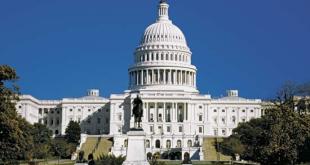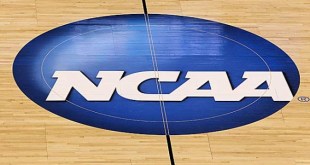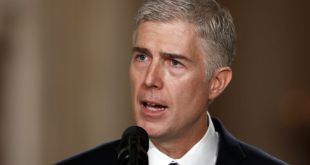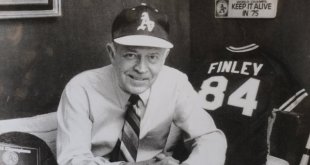During the off-season, Max Scherzer signed a hefty $210 MM seven-year contract with the Washington Nationals that is a prime example of creative drafting and forward thinking by team executives and player agents – in this case Scott Boras. It has been widely reported that Scherzer’s contract pays him $15 MM annually for 14 years through creative signing bonus disbursement and deferring the last three years of salary.
| Max Scherzer Contract Distribution (in MM) | ||||||
| Yearly Salary | Salary Distribution | Signing Bonus Distribution | Total Distribution | |||
| 2015 | 10 | 10 | 5 | 15 | *Salary | $160 MM |
| 2016 | 15 | 15 | 0 | 15 | **Signing Bonus | $50 MM |
| 2017 | 15 | 15 | 0 | 15 | ||
| 2018 | 15 | 15 | 0 | 15 | ||
| 2019 | 35 | 0 | 15 | 15 | ||
| 2020 | 35 | 0 | 15 | 15 | ||
| 2021 | 35 | 0 | 15 | 15 | ||
| 2022 | - | 15 | - | 15 | ||
| 2023 | - | 15 | - | 15 | ||
| 2024 | - | 15 | - | 15 | ||
| 2025 | - | 15 | - | 15 | ||
| 2026 | - | 15 | - | 15 | ||
| 2027 | - | 15 | - | 15 | ||
| 2028 | - | 15 | - | 15 | ||
| Total | 160 | 160 | 50 | 210 | ||
The structure of the contract benefits both Scherzer and the Nationals for the long-term. As explained further, structuring the contract in this way allows the Nationals to sign a premium player without stunting their future ability to undertake payroll while allowing Scherzer to sign a mega-contract and negate any tax obligations. Forbes documented the tax benefits Scherzer reaps by pitching for the Nationals, while maintaining a permanent address outside of the District. The Home Rule Act prevents Washington city government from imposing its 8.95% income tax on non-residents who live outside the city limits but work inside of them. Applying that rate to Scherzer’s 210 MM contract, he gains $18,795,000 in tax savings over the life of the contract. That savings offsets the reduction in value Scherzer bears due to deferred compensation, per MLB’s valuation of his total contract in current dollars, $191,401,086.[i]
By essentially deferring half the value of Scherzer’s contract (105 MM) over an additional seven years after the contract expires, the Nationals realize a savings not only with the value of their expenditures and cash flow, but with the Competitive Balance Tax as well. In calculating what’s more commonly referred to as the “Luxury Tax,” Major League Baseball calculates a player’s salary by aggregating all definitive expenditures regarding compensation, including guaranteed salary, signing bonus, buyouts, performance bonuses earned, and deferred payment. That sum is divided by the length of the contract with the resulting figure serving as the club’s yearly salary allotment for Competitive Balance Tax purposes. Since MLB discounts deferred payments using a formula based on Net Present Value (more on that from Fangraphs), Scherzer’s contract under the Luxury Tax amounts to slightly less $201 MM or $28,689,376 annually, over seven years.
Net Present Value (NPV) accounts for the decreasing value of currency due to the principle of Time Value of Money. NPV adjusts monetary values for likely inflation and lost investment income on average rates of return. MLB uses the “Federal mid-term rate” as calculated by the IRS to determine lost investment income for deferred compensation. Saving a little over $1.3 MM annually over the course of Scherzer’s contract, the Nationals have given themselves some wiggle room under the Luxury Tax. This benefit is obtained all the while the deferred compensation counts nothing against the Luxury Tax from 2022 through 2028. The Nationals can then apply that tax savings to modest raises players experience through arbitration. For instance, infielder Danny Espinosa’s salary jumped from near the Major League minimum salary to $1.8 MM (just under $1.3 MM increase), and Catcher Wilson Ramos’ salary increased just over $1.4 MM in his second time through arbitration.
The structure of Scherzer’s contract exists over a time when the Nationals television revenue should grow. The club’s television contract is tied to the relocation agreement between MLB and the Baltimore Orioles which allowed the Nationals to move into the Orioles exclusive territory. That agreement called for Nats games to be broadcast over a regional sports network, MASN, owned in part by the Orioles and in part by the Nationals. However, the Orioles would always own a dominant position in the network, no less than a two-thirds stake. The Nationals ownership percentage started at 10% and, starting two years after the team’s relocation to Washington, grows 1% each year with a cap at 33%. Heading into the 2015 season the Nationals own a 16% share in MASN, which will grow to 29% by the time Scherzer’s deferred payments come off the books.
The Nationals are also supposed to be renegotiate their broadcast rights fees with MASN every five years. Such renegotiation has caused the current legal battle between the Orioles, Nationals, and MLB. The Nationals had been earning $29 MM per year in rights fees before renegotiating and supposedly wanted at least $100 MM per year based off the recent television deals realized by other clubs.[ii] The Orioles, through their dominant position and control over MASN, offered $35 MM. This led to an internal MLB arbitration panel which awarded the Nationals an increase in rights fees of nearly $31 MM annually across five years. The Orioles and MASN have challenged this award in court, not asserting that the Nationals aren’t entitled to a rights fee increase, but that the decision was “tainted” because the Nationals were represented by a law firm that also represents MLB and teams with executives sitting on the arbitration panel. In addition, MLB has an invested interest in increasing the Nationals rights fee because the league has been making annual payments to the Nationals, reportedly $25 MM, to make up for their deficient television deal – which the league is complicit in forcing upon them. Mainly at issue, however, is how the rights fee should be calculated.
Nonetheless, no matter the outcome of the court case involving the arbitration panel’s decision, the rights fees the Nationals receive is due to increase. The club will also have the right to renegotiate its TV deal at least twice more while continuing its deferred payments to Scherzer. The improved TV rights fees the Nationals will obtain and the additional revenues brought in from a greater ownership stake in MASN will allow the organization to use that new income to pay off a good chunk of the contract. The Nationals creativity in drafting Scherzer’s mega-contract should afford the organization financial flexibility to maintain a competitive Major League roster and absorb other large player salaries. Deferring Scherzer’s contract essentially gives the club an interest free loan. The Nationals have used future earnings to acquire an asset with the goal of helping them achieve something the organization has never experienced - a World Series Championship.
[i] 191,401,086 + 18,795,000 = 210,196,086, more than the $210 MM face value of Scherzer’s contract
[ii] The Texas Rangers, who occupy a similarly sized market as the Nationals, recently negotiated a new rights deal that carries an average annual value of $150 MM.
 The Sports Esquires Putting Sports on Trial
The Sports Esquires Putting Sports on Trial





2 comments
Pingback: Baseball Blogs Weigh In: Owings, Balfour, Blue Jays - MLB Trade Rumors
Pingback: Baseball Blogs Weigh In: Owings, Balfour, Blue Jays | BNNBNN